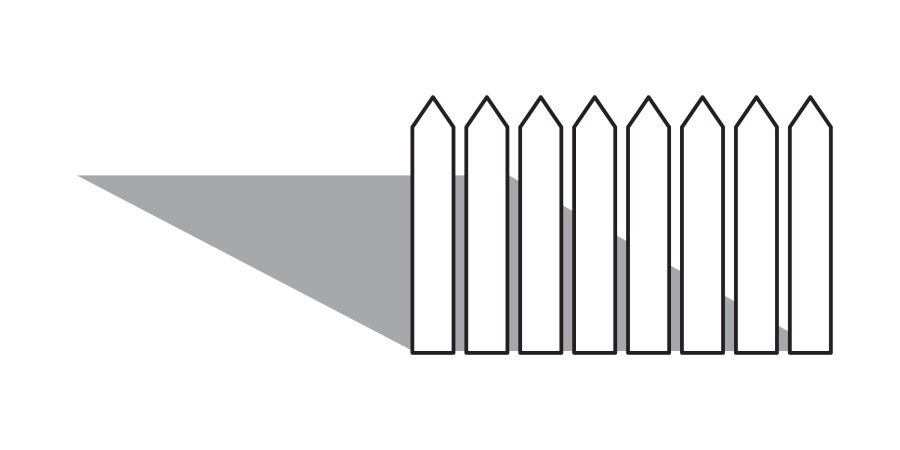Introduction
Defensible space was a concept originally explored by Oscar Newman in the 1970s.
Defensible Space is an architectural principle of design where the intent of the house layout and exterior land is to allow residents to control the areas around their homes.
- This goes beyond the home design itself and includes streets, and grounds outside of their buildings and the lobbies and corridors within them.
The main idea here is that it essentially puts the safety of the space and community more on the individuals and community members, rather than on government intervention— therefore it is not vulnerable to government’s withdrawal of support.
Study Findings:
- A family’s claim to a territory diminishes proportionally as the number of families share that claim increases
- The larger the number of people who share a communal space, the more difficult it is to find people who identify it as ‘theirs’ or that feel they have a right to determine the activity taking place within it.
The thesis is that designing a space that allows residents a sense of ownership and control leads to an environment that people care about and will work to maintain and protect.
- Essentially you also get a situation where neighbors are more likely to look out for another space when they can associate the ownership of that space to another neighbor. “Neighbors looking out for one another”
Modification of existing space can be done by
- Gated Streets – successful in creating mini-neighborhoods.
- Stricter enforcement of building codes and zoning/architectural guidelines
- Help for new first-time home buyers
CPTED
CPTED – Crime Prevention Through Environmental Design: Takes the idea of defensible space further and includes additional methods to reduce crime, such as electronic surveillance, alarms, and human ability to interact with the space such as patrolling or view/eyeline. This is the process of designing security into architecture.
- Relies on the inhabitants to police their own surroundings.
- Example: Stairways and elevators should be in view of other areas and not concealed, so that there is always the ability to monitor and no ‘dead zones’.
- The goal is to design an environment that encourages them to do so by clearly defining public and private spaces
- Example: A line of low plantings along the road in front of a house, allows a family/person to have territorial ownership of the space between the plantings and the house (the front yard), but still allows visual connection and surveillance of what’s happening beyond.
- CPTED focuses on influencing behavior in positive ways. Regulating behavior is outside of its scope.
Types of Surveillance
- Video: Camera monitored by someone
- Audio: Loud noises set off the alarm
- Motion: Something moving in the area/vicinity will set off the alarm or turn on lights at night.
- Thermal: Used to detect high heat sources
Population Density
Population Density: Defined as the number of people per unit of area (example: 20,000 people per square mile)
- A small town may have a high density if building sites are small and building tall. Suburbs may have low density if the population is high but spread over a large area.
- High density does not necessarily imply crowding, since it depends on the type of activity, therefore, high density is not itself bad.
- Jane Jacobs: ‘Density is necessary for diversity, and density is only too low or too high when they frustrate the city diversity instead of abetting it’
- Example: High density of a movie theater does not cause a crowded feeling if each person has a seat.
Population Size: Actual number of people in a given location, without regard to density
Residential Density: Number of people accommodated in a given area of land (example: 15 people per acre)
- May be given in Net or Gross.
- Extremely important to understand residential densities when planning public facilities and utilities (traffic, water, sewage, etc)
- There may not be the ability to service the amount of residences until the system is upgraded or expanded. This falls more into civil engineering (thankfully).
- Net Residential Density: Number of inhabitants to housing land (excludes streets)
- Gross Residential Density: Ratio of inhabitants to the total land, including streets, facilities, and open space. (more useful measurement)
Social Groups
Primary and Secondary Social Groups
Both primary and secondary social groups are necessary for psychological health. Interactions with both groups over a long period of time help create unique emotional perspectives. When someone is brought up without one of the social groups, they are missing a vital component to their upbringing. Therefore in situations where someone is missing a secondary social group, it’s important to set up social groups to make up for the missing interactions and development.
When we design houses, workplaces, schools, or any type of building, we are designing places to accommodate the primary-secondary social needs of large numbers of people.
Primary Social Group
Person has the most intimate and hence greatest variety of social interactions.
- Helps a person develop as a full individual
- Family and immediate friends make up the group
Secondary Social Group:
Group with which one has less intimate and more specialized interactions, such as work or professional groups.
- Allows one to receive and to give to the larger society, which is equally essential to a sense of self worth
- At a workplace: it’s the coworkers
- At a school: it’s one’s classmates




Leave a Reply
You must be logged in to post a comment.